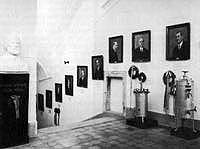
The permanent exhibitions of the museum demonstrate the development of Hungarian chemistry and chemical industry from the beginnings to modern times.

In the stairway visitors pass in front of the portraits of renowned Hungarian chemists.
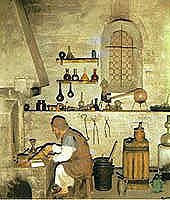 |
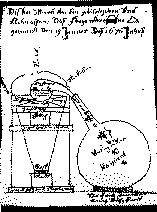 |
| Alchemists' laboratory | From the collection of the museum: drawing of an alchemist from 1676 |
The first permanent exhibition is devoted to the period until the 19th century. In the 12-13th century gold and silver were the most important export goods of Hungary. From the 14th century copper joined the list. Hungary was a pioneer in two important technologies: in the use of nitric acid on an industrial scale for the separation of gold and silver and in the extraction of copper from the waste waters of mines with a cemenetation process using iron.
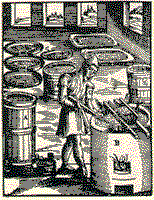 |
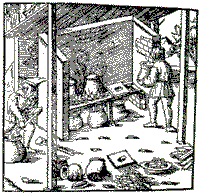 |
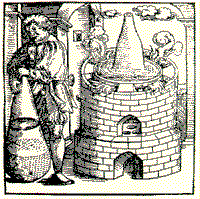 |
| Crystallization of nitre around 1580 |
Sulfuric acid production in the 16th century |
Digestion in water bath |
The first manufactures were set up here in the 18th century. This was the period when the use of natural resources started on an industrial scale. The production of potash, salpetre (potassium nitrate) and alum became important. The two latters were required for mineral acid production. The development of agrochemical industry also started, for example, stark factories, distilleries, soapworks, and oil-presses were established.
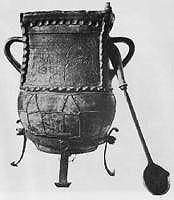 |
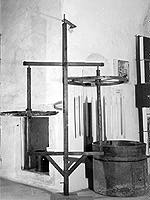 |
| Candle-pouring in the 18th century |
Candle-pouring equipment from the 19th century |
At the beginning of the 19th century several salpeter and gunpowder factories were founded, mostly for military purposes. In 1843 six sulfuric acid plants, 54 paint and gunpowder plants, 29 pharmaceutical, chemical and match factories, and 13 sugar factories were recorded. One of the match factories was owned by the Hungarian inventor of the "noiseless" match, János Irinyi. Somewhat later, gas works were built in all important Hungarian towns. In 1870 a dynamite factory, a refinery and a rubber factory were built.